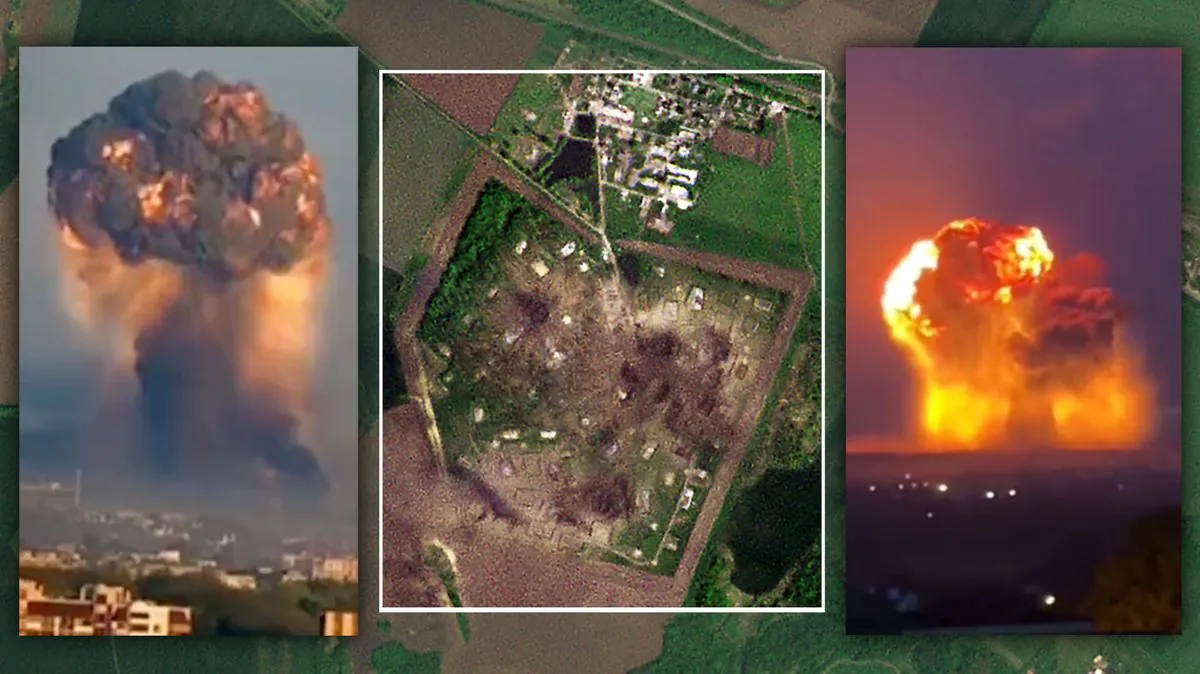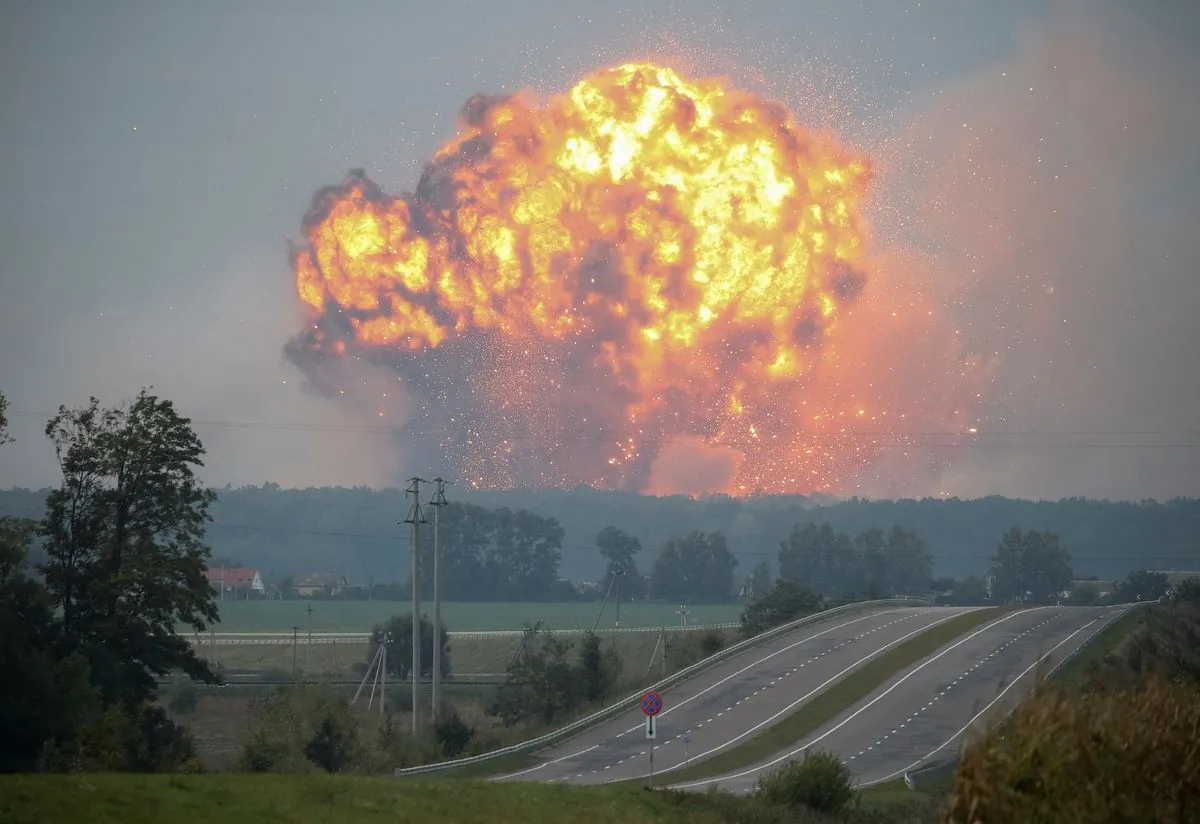Ukrainian Drones Strike Deep in Russia, Hitting Missile Arsenal
Ukrainian forces conducted a drone attack on a Russian ammunition storage facility 300 miles inside Russia. The strike ignited massive fires, raising questions about the use of long-range attacks in the ongoing conflict.

On September 18, 2024, Ukrainian forces executed a significant drone strike on a Russian ammunition storage facility in Toropets, Tver Oblast, approximately 300 miles inside Russian territory. The attack resulted in extensive fires and explosions, visible in verified social media videos.
Ukrainian security services claim the operation "wiped out" warehouses storing various missile systems and ammunition, including Iskander tactical missiles, Tochka-U systems, and artillery shells. These weapons have been used to target Ukrainian cities and infrastructure throughout 2024.
The Iskander missile system, a short-range ballistic missile platform, and the Soviet-era Tochka-U tactical ballistic missile system are among the most potent conventional weapons in Russia's arsenal. Russia possesses one of the world's largest stockpiles of conventional weapons, making such storage facilities high-value military targets.

Russian officials acknowledged a fire in the area but attributed it to falling drone debris rather than a direct hit on the ammunition facility. Tver Oblast Governor Igor Rudenya announced a partial evacuation of Toropets, which has a population of about 12,000 people, as air defense forces continued to combat the drone attack.
This strike occurs amid Ukrainian efforts to persuade Western allies to permit the use of Western-supplied weapons for deep strikes within Russia. Ukrainian officials argue that such attacks are effective and do not increase the risk of escalation. However, Western officials remain hesitant, citing concerns about potential war escalation and questioning the efficacy of such operations.
The use of drones in military operations has become increasingly prevalent in modern conflicts, raising ethical and legal questions internationally. Ukraine has been developing its own drone technology since the conflict began, demonstrating its capabilities with this recent strike.
The international community closely monitors the situation, as the conflict continues to push the boundaries of modern warfare. The use of social media to share conflict information has transformed war reporting, providing near-real-time updates on military operations.
As the conflict evolves, both sides continue to advance their air defense systems and strategies. The concept of striking deep behind enemy lines, a military strategy with historical roots, takes on new dimensions in the age of drone warfare and precision-guided munitions.
"The operation literally wiped off the face of the earth the ammunition warehouses."
This attack underscores the complex nature of the ongoing conflict, as both sides grapple with technological advancements, international laws governing warfare, and the delicate balance of escalation risks. The international community remains vigilant, recognizing the potential for further developments in this protracted struggle.


































